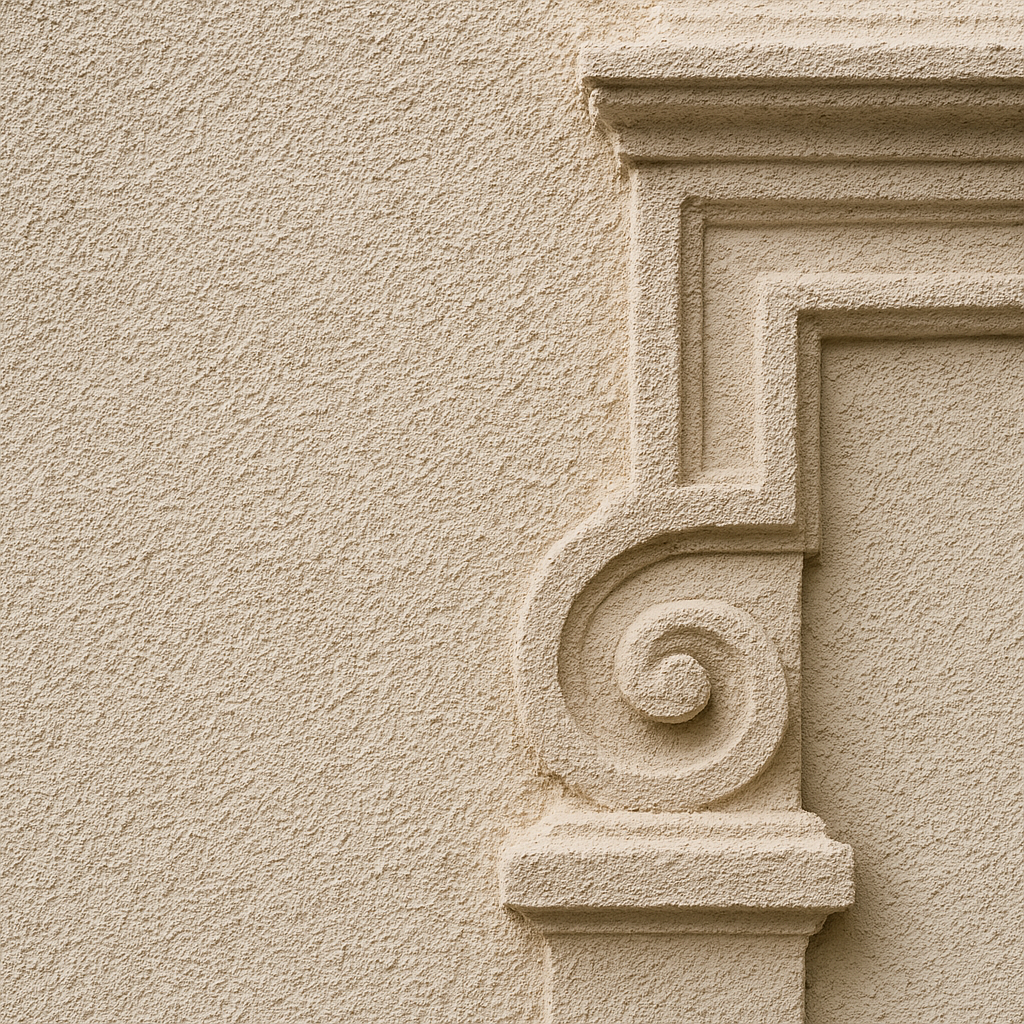

Understanding Stucco: Maintenance and Restoration Tips
Stucco has long been a hallmark of British period architecture, gracing Georgian terraces and Victorian villas with its elegant, stone-like appearance. As a traditional render, stucco not only enhances façades visually but also serves as a protective skin for underlying masonry. However, due to time, weather exposure and occasionally misguided repairs, many historic stucco surfaces develop issues that require specialist attention.
1. Cracks and Fractures
The Problem: hairline cracks are often the result of thermal expansion, natural settlement, or long-term weathering. If ignored, they can allow moisture to enter the structure, potentially leading to more serious internal damage.
How to Address It: cracks should be assessed to determine whether they are stable or progressing. Stable, hairline cracks can often be repaired using a fine lime-based filler that matches the existing render. For wider or structural cracks, repairs may require reinforcement behind the render and the introduction of a compatible lime mortar applied in stages.
2. Delamination and Bulging
The Problem: stucco that has detached from the wall behind it may bulge or sound hollow when tapped. This is usually caused by water infiltration or failure of adhesion between layers due to improper materials used in past repairs.
How to Address It: loose areas must be carefully removed to prevent further detachment. The substrate beneath should be examined, cleaned and, if necessary, stabilised. New lime-based stucco can then be applied in layers, using traditional techniques to ensure proper bonding and breathability.
3. Staining and Surface Discolouration
The Problem: stains from algae, lichen, pollution, or leaking gutters not only affect the building’s appearance but may also indicate moisture problems within the render.
How to Address It: cleaning should be carried out using gentle, non-abrasive methods such as low-pressure steam or approved conservation-grade cleaning solutions. It’s vital to identify and resolve the source of moisture — whether it’s a leaking pipe, blocked gutter, or poor water runoff — to prevent recurrence.
4. Spalling and Flaking
The Problem: when water penetrates the stucco and then freezes, the expanding ice causes the surface to crack and break apart — a process known as spalling. This is especially common when hard cement-based renders trap moisture.
How to Address It: all affected material should be removed carefully, and the underlying wall assessed for damp. Repairs must use a breathable, lime-based stucco that allows moisture to evaporate. Modern cement renders should never be used, as they exacerbate the problem by sealing moisture into the building fabric.
5. Incompatible Past Repairs
The Problem: previous repairs using modern, cement-based materials or plastic paints often do more harm than good. These materials are too rigid and impermeable for historic buildings, causing cracking, damp, and accelerated decay.
How to Address It: these inappropriate materials must be gently removed by specialists without damaging the underlying structure. Once removed, the stucco should be reinstated using traditional lime mixes, applied by experienced craftspeople who understand the behaviour of historic materials. Finishes should be breathable — mineral paints or limewash are ideal.
6. Fading or Deteriorated Finishes
The Problem: over time, paint finishes can fade, peel or become patchy due to weather exposure or unsuitable materials used in previous redecorations.
How to Address It: before repainting, the surface must be cleaned and stabilised. Paint should only be reapplied using breathable finishes such as limewash or mineral paint, which allow moisture to escape from the building fabric. Any existing non-breathable coatings should be removed where possible to restore vapour permeability.
Final Thoughts
Caring for stucco on a historic property requires far more than cosmetic treatment. It demands a deep understanding of traditional materials and an approach that respects the age, structure, and significance of the building. Using modern materials or taking shortcuts can lead to long-term damage — whereas sensitive, well-informed restoration helps preserve both the beauty and integrity of the building for generations to come.
If you're responsible for a heritage property with stucco features, regular inspections and early intervention by conservation professionals are key. With the right knowledge and care, this timeless material can continue to protect and beautify Britain’s historic architecture well into the future.